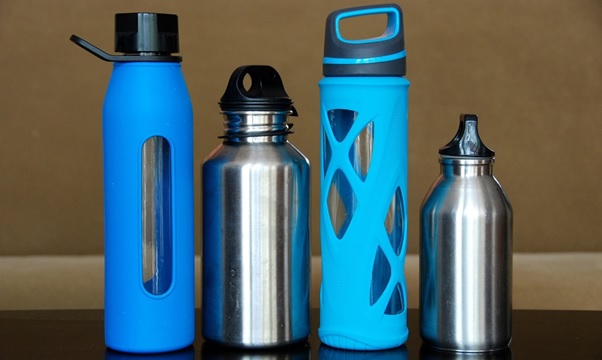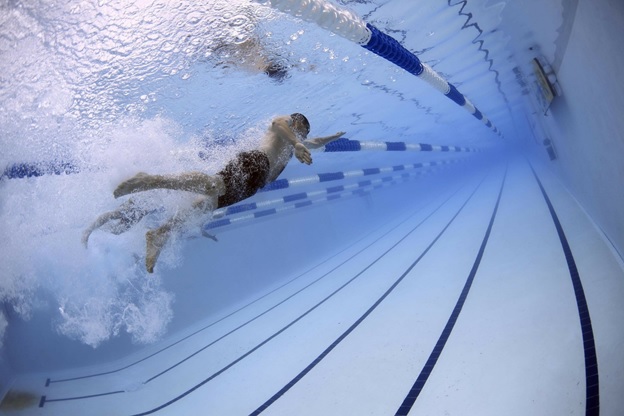Posted on
April 23, 2019 by
Christian Taylor
Be it your first day at the gym or just your regular
day at gym. It doesn’t matter if you train in a well-equipped gym like the gyms in Bondi beach
with excellent hygiene and facilities or to a local gym, there are a few gym
essentials that you must have in your gym bag – the essentials
will come handy during and post workout session.
Here are ten must-have accessories you can’t
afford to be without for your workout session.
Reusable Water Bottle
If you don’t want to wait in line for a water
fountain or not comfortable drinking tap water, then a BPA free drink
bottle is an essential item you should have in your gym bag. With
this investment, you will able to keep yourself hydrated pre, during and post
workout session.
Read the rest of this entry →
Category
Health & Fitness, Sports equipment, Sports Fitness, Sports Gifts
Posted on
April 22, 2019 by
Christian Taylor
Swimming as a sport and competitive swimming are
two different areas. If you are the latter area and planning to head into the
first one, than the first question that comes to the fore is: What should I
focus on to increase my performance in the pool? Well, to be honest there are
plenty of things that you should focus on but we have narrowed them down to 5
areas that you MUST focus at the start.
But before we dive into the details, I want to ensure that you perfectly understand that competitive swimming is all about building stamina by committing more hours to workout per week, focusing on your diet to fulfill all your dietary requirements, focusing on perfecting techniques and strokes and wearing the right swimwears and training equipment.
The areas that we have outlined here can be easily
adjusted within your existing routine and help you make your overall swimming
training sessions more goal-oriented and fun at the same time (listed in no
particular order):
Read the rest of this entry →
Tags: fitnessSwimming
Category
General, Health & Fitness, Swimming
Posted on
January 29, 2019 by
Jessica Peters
 The world’s elite athletes are always looking to give themselves an advantage over their opponents, regardless of the sport and the team/individual they are competing against. One crucial way of achieving that is to train hard, and compete even harder. Unfortunately for some athletes, however, all they do succumb to injury or get too tired to train. This means less training and less chance of competing at the highest levels, due to the stiff competition they are up against. What do some of the world’s leading athletes do to counteract this issue and how do they stay fit and healthy through their training and competitions?
The world’s elite athletes are always looking to give themselves an advantage over their opponents, regardless of the sport and the team/individual they are competing against. One crucial way of achieving that is to train hard, and compete even harder. Unfortunately for some athletes, however, all they do succumb to injury or get too tired to train. This means less training and less chance of competing at the highest levels, due to the stiff competition they are up against. What do some of the world’s leading athletes do to counteract this issue and how do they stay fit and healthy through their training and competitions?
Massage Therapy
Some athletes take to the table to ensure they get some quality time for muscle and mental relaxation. Massages encourage the muscles to breath and blood to recirculate. Training/competing hard means muscle tissues become extremely stiff and aren’t able to circulate blood as they would normally. However, a simple massage could be all it takes to get an athlete back in training sooner rather than later, which always gives them a competitive edge.
Nutritional Protein Shakes
There are many nutritional protein powders available on the market to athletes who are looking for quick muscle repair and the chance to get back to the gym quickly. There are many powders that can be mixed with fruit and veg to give athletes the nutritional value they seek, and the chance to repair their muscles at a quicker rate. Shakes come with different flavors and benefits to suit a variety of athletes, so it’s better to do your research before you go out and buy a big pot, as it’s generally quite expensive. Read the rest of this entry →
Tags: Sports Fitness
Category
Health & Fitness, Sports equipment, Sports Fitness
Posted on
January 26, 2019 by
Jessica Peters
 It is a great time to be a fitness-conscious person. Not only do you have more workouts to try and specific programs to help you achieve your goals, there are also more gyms and supporting facilities that you can visit to exercise. The growing fitness market means gyms and workout classes are also getting more affordable.
It is a great time to be a fitness-conscious person. Not only do you have more workouts to try and specific programs to help you achieve your goals, there are also more gyms and supporting facilities that you can visit to exercise. The growing fitness market means gyms and workout classes are also getting more affordable.
There are also gadgets and gear designed to help you work out better. Whether you want to keep track of your exercises or you want to increase the intensity of your workouts, picking up the right gadgets to support your exercise is the way to go. To help you get started, these fitness items are the ones you want to consider.
A Capable Fitness Tracker
Fitness trackers are perfect for keeping tabs on your exercise. The available trackers can help you monitor your progress while working out, which means you know exactly when you can start with every phase of the exercise program. Wearing a fitness tracker lets you gain more benefits from the workout itself.
There are some interesting options on the market too. The Fitbit Charge 3 is the perfect device if you are looking for a compact fitness tracker that still looks good when worn every day. The stylish design also means you can pair this fitness tracker with any workout outfit you like.
The Apple Watch 4 is also a great option. It may not be a device specifically for fitness tracking – and it only works with iOS devices – but you can still monitor key metrics while exercising. The added features that come with the Apple Watch 4 makes this smartwatch a great all-rounder. Read the rest of this entry →
Tags: equipmentfitness
Category
Health & Fitness, Sports Fitness
Posted on
December 14, 2018 by
Dara Cruz
 Playing the sports or being a part in the betting shouldn’t be your only focus, especially if you are about to own a horse or is planning to own one. Before buying an equine companion at home, you should first know the things that you need to learn about the basics of good horse care.
Playing the sports or being a part in the betting shouldn’t be your only focus, especially if you are about to own a horse or is planning to own one. Before buying an equine companion at home, you should first know the things that you need to learn about the basics of good horse care.
In order to make the horse be in its best ability and good condition, its owner should be aware of a horse’s health condition and vital status as part of one’s responsibility in raising a horse — especially if the horse is planned to be joined in a competition such as the Pegasus world cup. Want to know how to take good care of your equine pal? Here’s how:
Preparing the Horse’s Area
Your horse needs a proper place to stay, right? Its environment heavily contributes on its health and wellness, thus at the very least provide its needs such as making sure that its pasture is free from hazards like holes, loose wire fences, and rusty farm machinery.
Add it up with safe fencings, like using plastic, wooden, mesh wire fencing or vinyl rails. You take these safety area precautions so that your horse is free from injuries obtained from harmful fencing. Read the rest of this entry →
Tags: horses
Category
Health & Fitness, Outdoor Activities
Posted on
December 10, 2018 by
Jason Smith
 For obvious reasons, you don’t want a neck injury. Not only have many professional athletes sat out whole seasons – or ended their careers – due to necks injuries, but roughly 10 percent of the adult population suffers from stiff, painful necks at any time, impacting their comfort and quality of life.
For obvious reasons, you don’t want a neck injury. Not only have many professional athletes sat out whole seasons – or ended their careers – due to necks injuries, but roughly 10 percent of the adult population suffers from stiff, painful necks at any time, impacting their comfort and quality of life.
Working out your shoulders and back, high-impact training like jumping and falling and even just sitting or sleeping improperly can cause problems with your neck. If you want a strong, stable neck, you should know about these common neck disorders – and how to avoid them.
Nerve Problems
The neck is the thinnest part of your body – and it is also where some of the most important nerves in your body reside. Thus, damage to the neck can easily result in nerve problems that result in numbness, reduced function, pain or other issues on other parts of your body. It is possible to develop a pinched nerve in the neck merely by sleeping wrong or turning your head quickly and improperly, but in sports, more serious nerve issues can occur.
Among the worst are stingers and burners, which often occur to football players and other contact-sport athletes. As their name suggests, stingers and burners result in stinging, burning pain as well as an electrical sensation down the arm. When these symptoms last more than a minute or two, it is critical that you see a doctor as you may have a catastrophic neck injury.
Muscle Spasms
Muscle spasms occur in any skeletal muscles that have recently been overused and are feeling fatigued. Dehydration and malnutrition can also result in uncomfortable or painful spasms. High-performance athletes in any sport can suffer spasms, but the solution is simple: rest, hydrate, eat healthily and rest more. Read the rest of this entry →
Category
Health & Fitness, Sports Medicine





